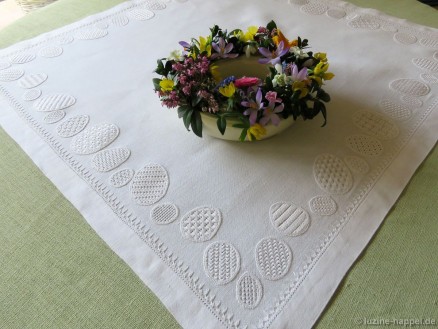Per my request, a brilliant Schwalm designer – Christa Waldmann – made the hand drawing of the beautiful design featured in the framed Schwalm sampler article. Another designer then transferred the hand drawing into a graphic. Now it is ready for all to enjoy as a downloadable document.
The six-page document presents the entire design in its original size with an enlarged picture of the needle-weaving band.
line-drawn design
6 pages
Text: English
1,9 MB file size
10.00 € (incl. 19,00 % sales tax), 8.40 € for customers outside the EU
shop
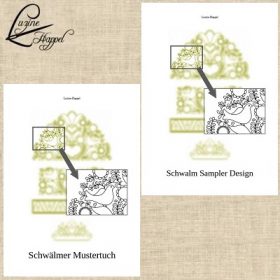
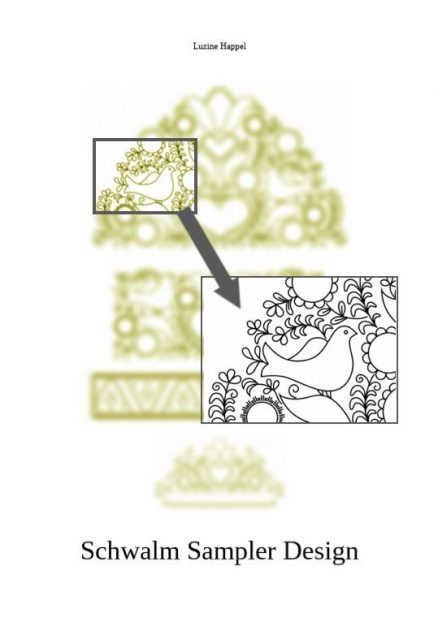
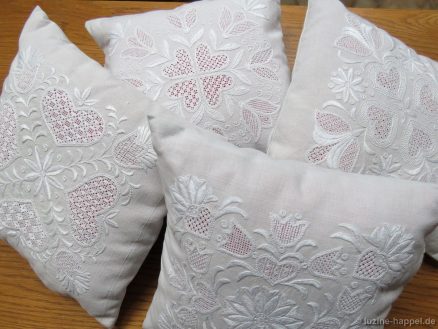
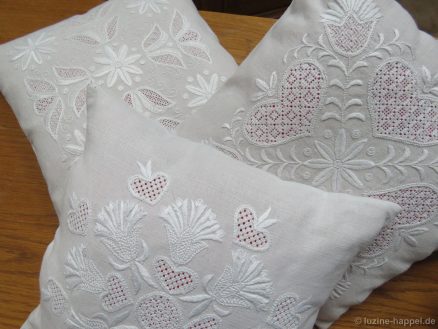
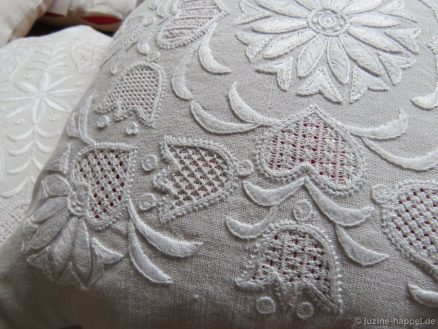
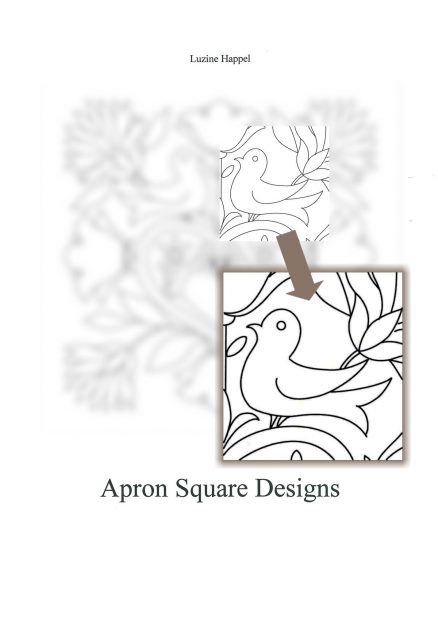
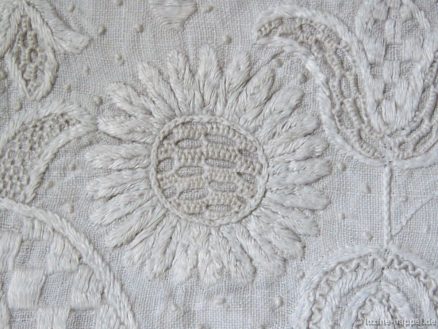
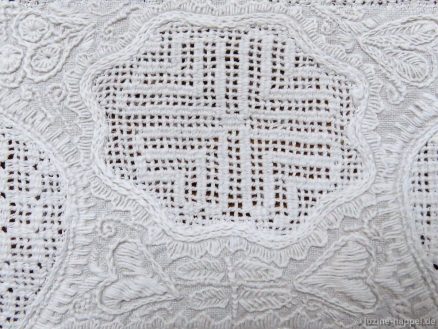
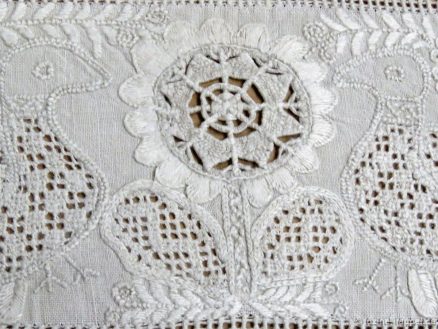
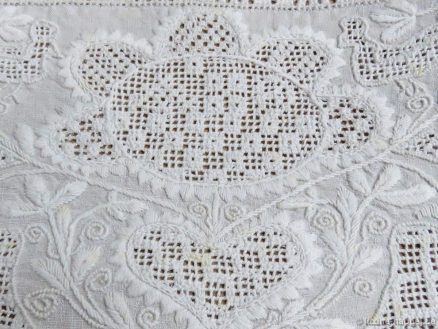
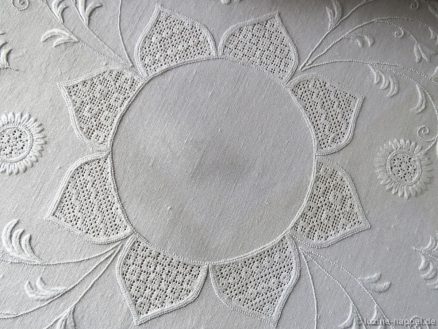
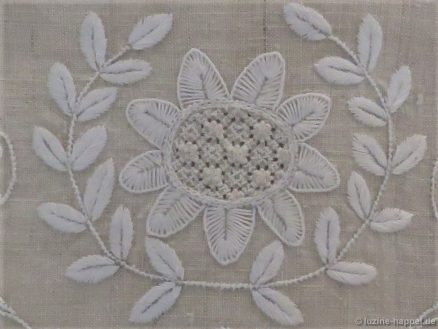
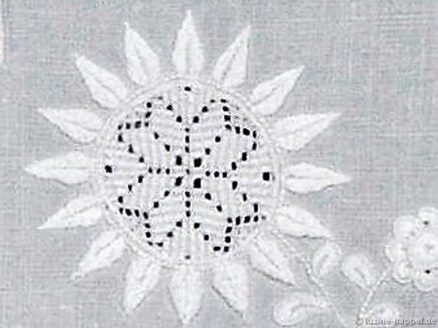
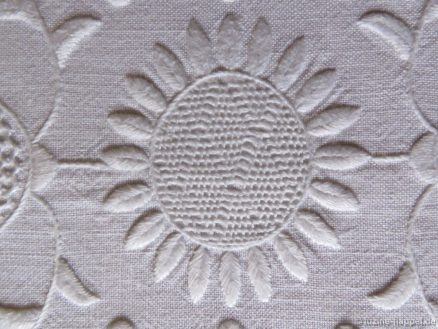
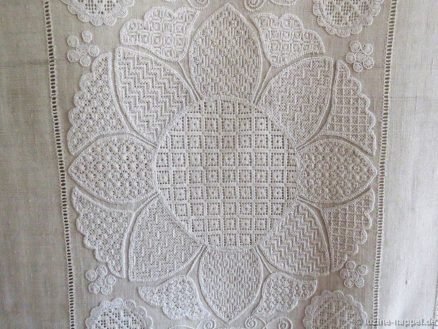
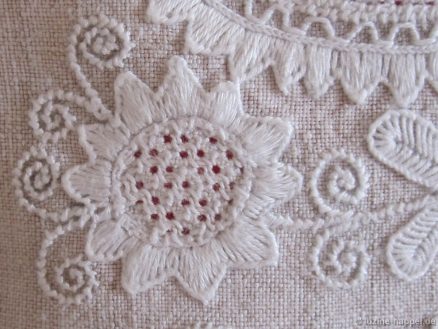
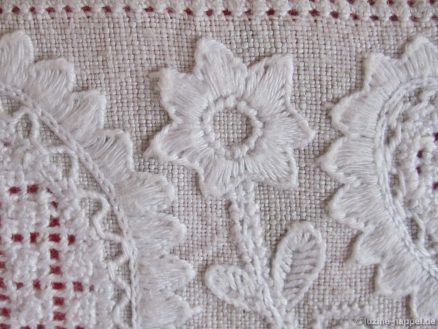
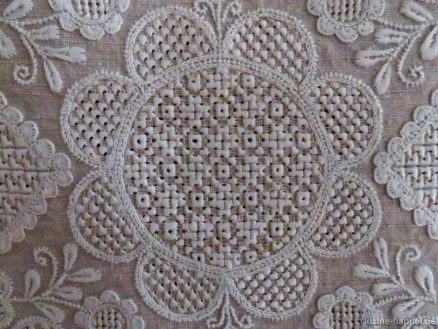
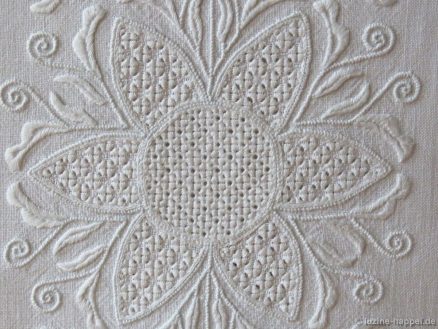
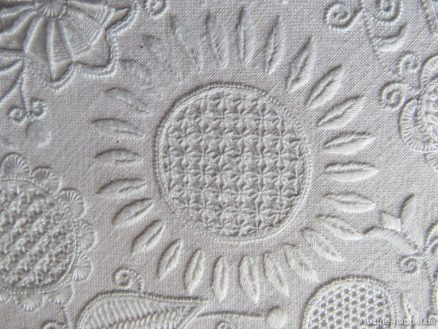
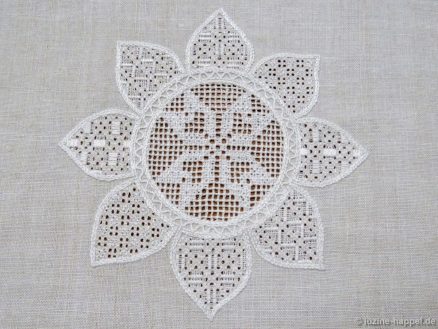
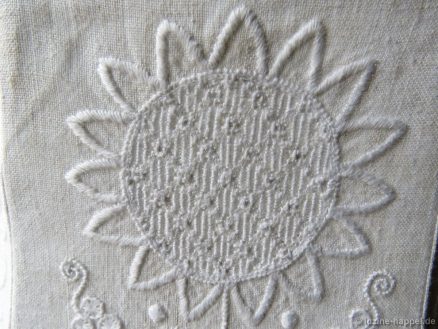
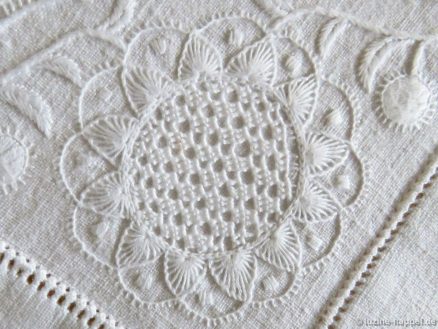
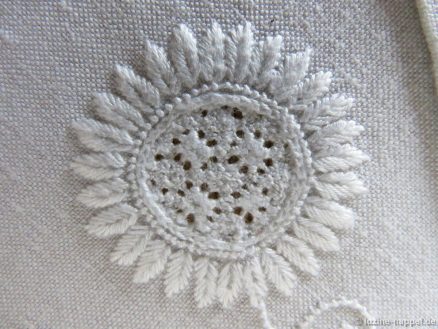
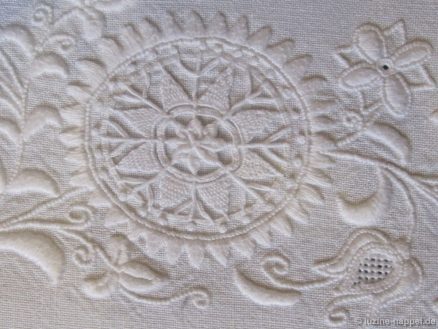
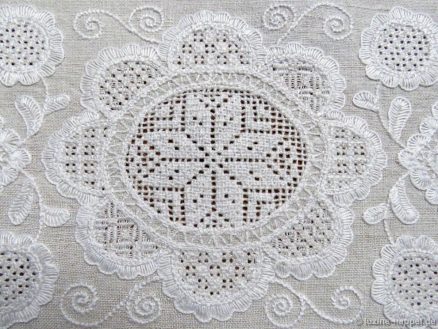
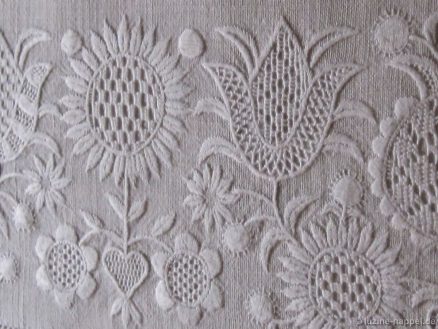
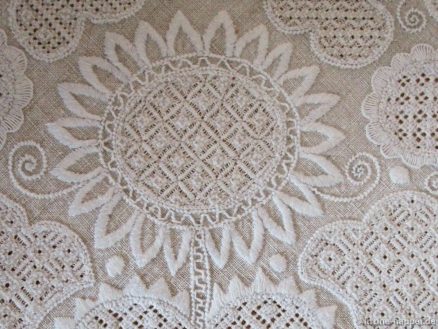
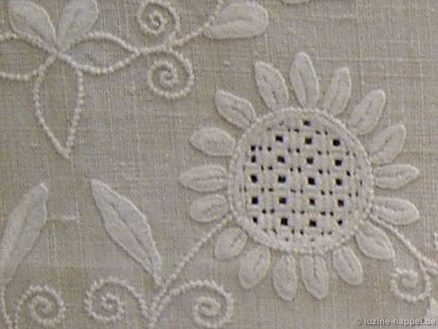
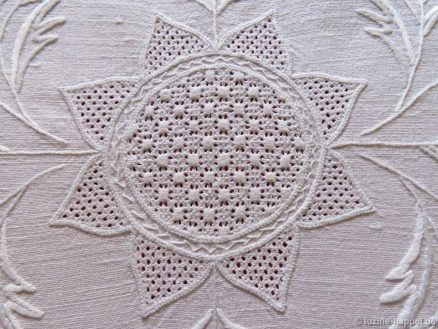
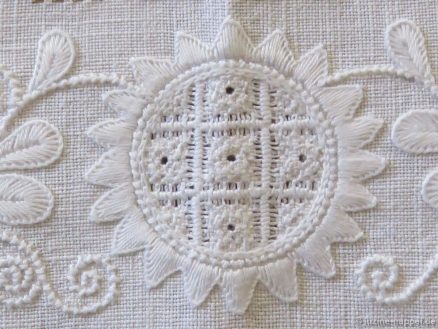
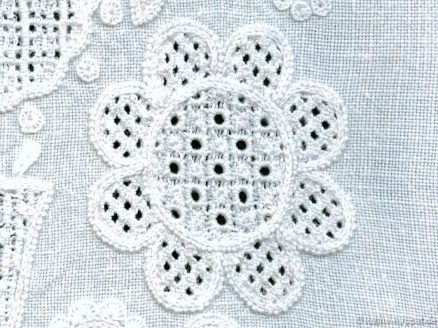
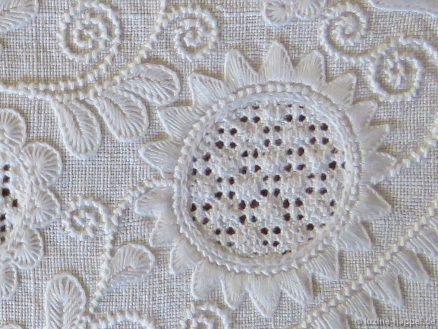
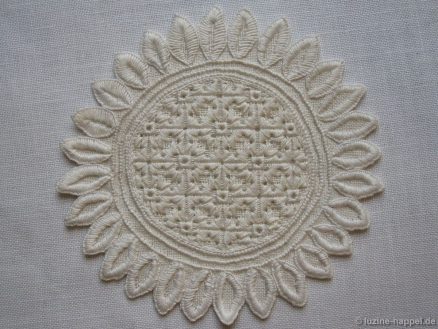
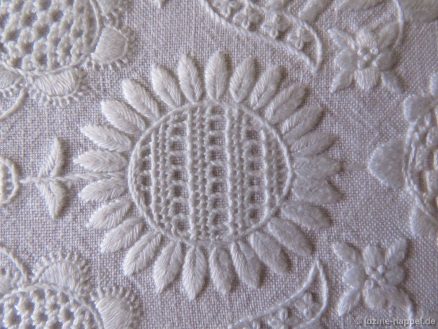
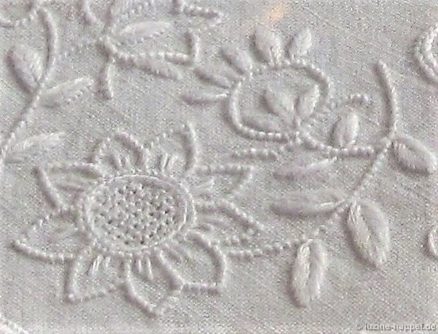
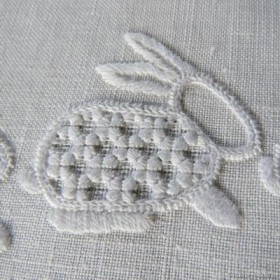
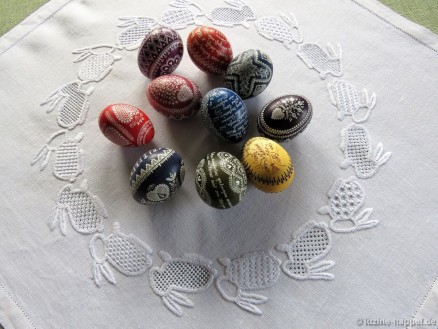
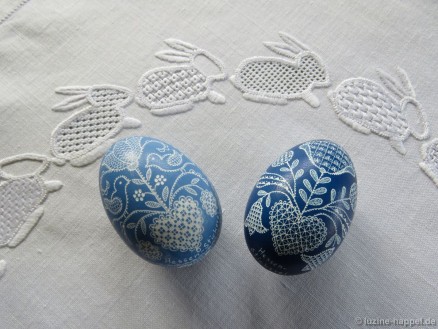
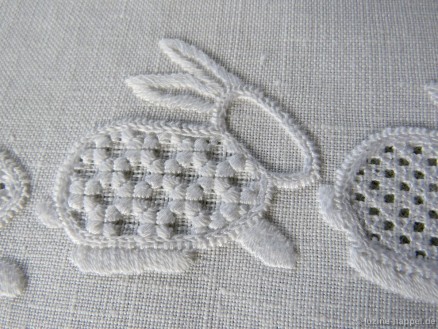
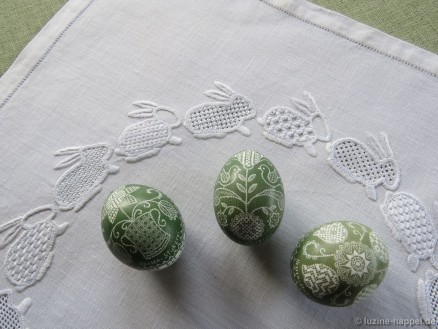
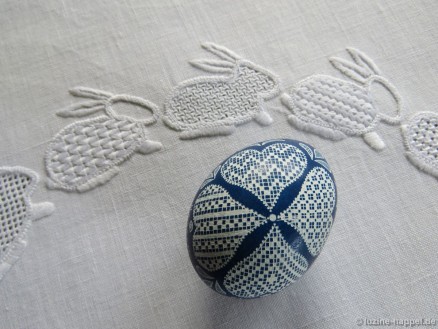
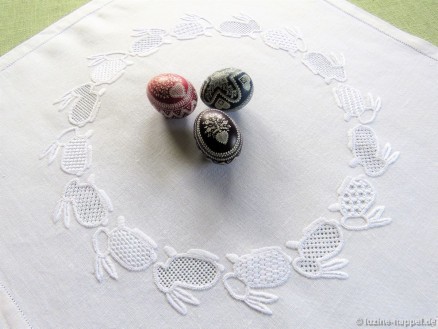
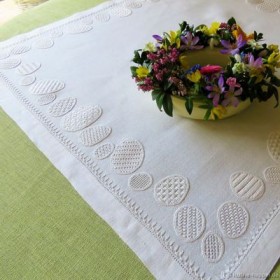
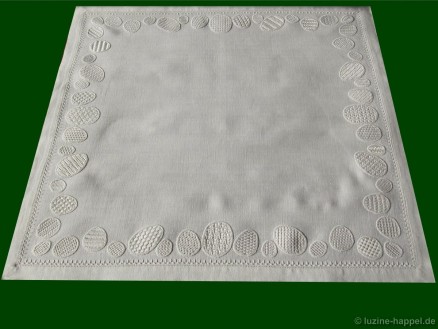 To simulate grass, I used “Trachtenstitch” (see
To simulate grass, I used “Trachtenstitch” (see 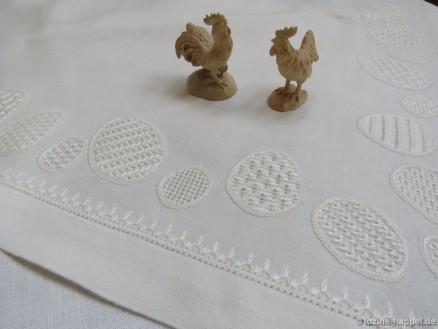 Each of the fifty-four eggs got its own special pattern. This was a real pleasure to stitch. I used exclusively square eyelet patterns, most can be found in my Limetrosen I book. The patterns in
Each of the fifty-four eggs got its own special pattern. This was a real pleasure to stitch. I used exclusively square eyelet patterns, most can be found in my Limetrosen I book. The patterns in 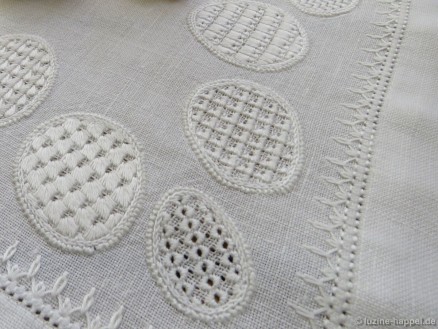 The Easter eggs can be decorated with striped patterns
The Easter eggs can be decorated with striped patterns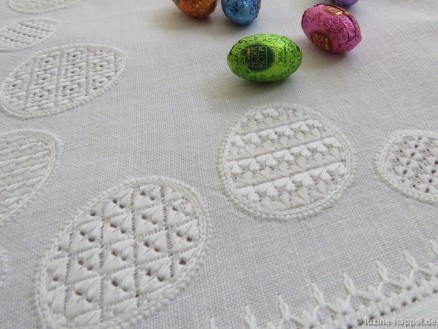 or with dots.
or with dots.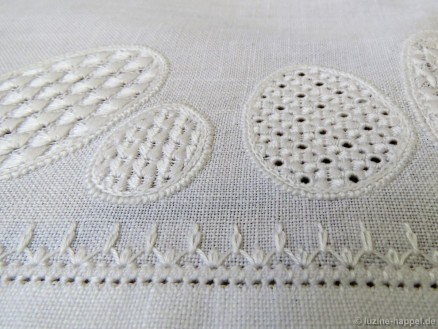 The Limetrosen patterns use more thread than many other stitches. But the effect of the threads, dense and lying in different directions on top of the fabric, is very pleasant indeed. Chiaroscuro – the interplay of light and shadow – makes the border beautiful, although is is unadorned. My tea cloth is eye catching. The whitework is timeless; it complements all kinds of crockery, flowers, and contemporary decorations.
The Limetrosen patterns use more thread than many other stitches. But the effect of the threads, dense and lying in different directions on top of the fabric, is very pleasant indeed. Chiaroscuro – the interplay of light and shadow – makes the border beautiful, although is is unadorned. My tea cloth is eye catching. The whitework is timeless; it complements all kinds of crockery, flowers, and contemporary decorations.